Drought is casting a deep shadow over the business world. But a unified voice remains out of reach, writes Rob Brown
"If climate change is the shark, then water is its teeth."
These were the words of Carbon Disclosure Project CEO Paul Dickinson last year as he launched the first-ever global survey of the threat that drought and in some cases a cruel excess of water poses to the planet's 300 biggest businesses.
In November, the results will be published, sending a warning to the business world that it needs to raise its game if it wants to combat the threat.
Yet, some companies appear to be in greater fear of being bitten than others. Enquiries by The Grocer have revealed that a number of the world's major grocery players Coca-Cola, Pernod Ricard and Kraft Cadbury among them have not responded to the CDP's water disclosure questionnaire sent out in April.
Given that by 2030, almost half the global population will live in areas blighted by water scarcity [UN], their lack of participation would seem to betray an incredibly cavalier attitude to what may be the biggest environmental issue of this decade.
But does it matter that they haven't signed up to the CDP programme when so many companies Coca-Cola, for instance are taking decisive action and disclosing what they are doing in incredible detail? Or is the whole water reduction drive in danger of being dogged by the same multilateralism and vested interests that have arguably dogged the carbon reduction movement?
The CDP programme was devised to alert investors to how drought will affect the operations and supply chains of major corporations. "It combines a call for action from the investment community with a platform to enable companies to think about water-related risks and opportunities in a strategic way, and a means to report to stakeholders," says Marcus Norton, head of CDP water disclosure.
Pernod Ricard says it will take part next year and Kraft Cadbury is currently measuring its "global footprint and reviewing some strategic elements of our water strategy" with a view to signing up in the future. Meanwhile, Nestlé, Unilever, P&G, SAB Miller and AB InBev are among many food and drink companies that have agreed to have the risks they're exposed to and the steps they are taking to reduce them published by the CDP in November.
For Andy Wales, SAB Miller head of sustainable development, it is an important step toward understanding the global picture. "This is very much about transparency," he says. "We've reported our water use by country to the project we are one of the few companies to have done that."
With transparency comes accountability and, says Wales, seeing which countries are ahead of the curve and which behind, will help it target the more water-wasteful parts of its empire. The goal for SAB Miller is to cut its water use by 25% of its 2008 level to 3.5 litres of water for every litre of beer brewed by 2015. It is not the only company in brewing, one of the world's thirstiest industries, to have set itself ambitious targets. AB InBev, the world's biggest brewer, has its sights set on hitting 3.5 litres of water per litre of beer by the end of 2012.
Soft drink producers including those that haven't signed up to the CDP are also on the case. Coca-Cola 's European operation CCE has brought down the amount used in the production of a litre of Coke in Britain from 2.01 litres in 2001 to 1.43 last year. "We have a goal to reduce our relative water use to 1.3 litres of water for every litre of product we produce," says Paul Smith, head of environment, health and safety at CCE. "Wakefield, one of our biggest factories, is already nearly there we are using 1.32 litres of water per litre of product. Others have a way to go."
The company defends its decision not to be involved in CDP on the grounds the programme is just the latest in a string of water surveys albeit more ambitious and that it prefers to disclose progress on sustainability in its own reports.
Norton argues that for the industry as a whole to make progress, it is vital big corporations like Coca-Cola are on board, as this, he says, "should accelerate the development of standard metrics vital for true understanding and comparability".
That acceleration is crucial. Even in Britain, it won't be long before the cost of water could make or break businesses. "The population forecasts for England and Wales are that something like another 15 million people are going to be living here by the 2050s," says Andy Turner, water resources manager at the Environment Agency.
The global picture is even more alarming. You only have to look at the phenomenal amount of water it takes to produce many products (see over) to appreciate how great the need for greater efficiency is. But the crisis is complicated by huge disparities in the amount required for production around the world.
CCE calculates it takes approximately 35 litres of water to produce 500ml of Coke in Holland. "There the amount we use is relatively small," says Joe Franses, CCE head of corporate responsibility. "There, sugar beet is grown largely as a result of rainfall. Water use will be very different in other parts of the world where sugar beet or cane are grown as a result of irrigation."
Work undertaken by SAB Miller in conjunction with WWF underscores just how much the water intensity of a product can vary. This month, the brewer revealed that in Peru it takes 61 litres of water to produce one of beer, from grain to glass. In Ukraine the figure is 62 and in Tanzania it is 180. Earlier studies showed the overall water intensity of SAB Miller's supply chain per litre of beer in the Czech Republic was 44 litres, in South Africa 155.
In short, it will be nigh on impossible to set global standards for water reduction. Even on a local level, it won't be an easy issue to address because of the sheer scale of usage. But programmes such as the CDP's will at least help set national benchmarks. The challenge then for companies will be to look at use outside their own doors which some are already doing.
P&G is aiming to add an extra billion consumers to the four billion it already serves in coming years. While cutting water use in P&G's operations is a priority (the company has achieved a 52% cut in recent years), key to the sustainability of this growth is enabling consumers to become more water efficient themselves. To this ends, P&G and others have been pursuing NPD (see p49).
"We want to develop and market at least $50bn in new products with significantly improved environmental profiles in the past two years we have already developed £13bn worth," says Peter White, P&G's director for sustainability. "One of the key areas is water use. But there's a social benefit to this as well. For the women and girls that have to carry the water in many parts of the world, if they only have to carry half as much, this frees up time to spend with the family, set up small businesses and spend more time in education."
Then there is the opposite end of the supply chain. Since 1995, Unilever has cut its own water use by 65%. "But in-house manufacturing water use is actually very small," says John Temple, global environmental sustainability director at Unilever. "We estimate that two-thirds of our raw materials come from agriculture, so one of the biggest risks we face is the effect of climate change and water scarcity on those crops. In Russia we see drought affecting wheat prices, so clearly there is a financial risk there's also a continuity risk."
With about 70% of the world's fresh water used by agriculture, farms supplying manufacturers account for the lion's share of water use. If the food and drink industry's water footprint is going to be made daintier, it is down on the farm where attention is needed.
"We have 1,000 agronomists around the world close to the farming communities that supply us," says José Lopez, global COO at Nestlé. "Often the way these farmers are irrigating is extremely wasteful, so we advise on how they can improve. We give about $30m in micro credit to help these people invest in this."
Not all measures need be capex-intensive, however. Simply irrigating at night or ploughing fields in the opposite direction to the gradient of a hill can yield significant benefits. The IGD is currently putting together a document aimed at advising growers on best practice. The question is whether initiatives like this and the CDP's are going to address the increased strain on water tables in coming years. Or are they just too little too late?
Professor Arjen Hoekstra, scientific director at the Water Footprint Network, fears they might be.
"Definitely not enough is happening," he says. "We see increased water use in many water-scarce areas. This is increasing problems rather than solving them. There should be pressure and support from consumers, from retailers, from the processors in the direction of the farmer to make this efficiency possible."
On the plus side, there are signs that water is beginning to weigh more heavily on retailers' minds. Annie Graham, head of brand sustainability and agriculture at Sainsbury's, will be joining figures from manufacturers such as Nestlé, Coke and Unilever at an IGD conference on water in the supply chain next month. She believes lessons learnt from energy reduction programmes can be used in water reduction.
"Historically we have helped some of our farmers procure their energy better. There's nothing to say we can't apply that learning to water," she says. Certainly something needs to be done to address the issue. "There's only one way the cost of water is going to go and that is up," says IGD sustainability analyst Simon Barnes. "That's starting to resonate in boardrooms."
An important first step will be the CDP's announcement in November. For the first time, the threat of drought to many of the world's biggest businesses will be laid bare. It could make for sobering reading.
Cutting the thirst
As the big hitters eye developing markets for future growth, NPD in these often dry regions is increasingly focused on slashing the water use of new consumers. The following two products show how the push for efficiency stretches from the roots of the supply chain all the way to the homes of consumers.
Downy Single Rinse
Markets: Latin America, Vietnam, the Philippines
Company: P&G
Downy Single Rinse is one of the $13bn worth of new greener products developed by P&G in the past two years. The product cuts the amount of water needed to rinse clothes by up to two-thirds, saving consumers valuable time that would otherwise be spent fetching water.
One Rinse
Markets: Indonesia, Thailand and Vietnam
Company: Unilever
Following successful launches in south east Asia, Unilever is gearing up for roll-outs of One Rinse in other emerging markets. This rinse aid helps remove the residues left by detergents and cuts the need for multiple rinses.
The thirstiest foods
Beer; 250ml glass = 75 litres
Most of the brewing industry's considerable thirst is accounted for by its use of barley, with a kilogramme of barley requiring 1,300 litres of water to be grown
Bread; 30g slice of bread = 40 litres
Bread's thirst is a result of its reliance on wheat, which like barley requires 1,300 litres of water per kilogramme
Crisps; 200g bag of crisps = 185 litres
The global average water footprint of 1kg of potato flakes is about 900 litres of water
Beef; 200g beef steak = 3,100 litres
The global average for a kg of beef is 15,500 litres of water over the three years it takes to rear a cow for meat on an industrial scale farm
Cheese; 200g wedge = 1,000 litres
Thanks to the need to process 10 litres of milk to produce cheese, it takes 5,000 litres of water to produce 1kg. Water intensity is offset by the creation of whey as a byproduct
Wine; 125ml glass of wine = 120 litres
The global average toll wine takes on the water table is mostly down to the water used to grow grapes
Apple; 100g apple = 70 litres
The Water Footprint Network calculates the water footprint of a 200ml glass of apple juice to be 190 litres
Coffee; 125ml cup of coffee = 140 litres
It costs a whopping 21,000 litres of water to produce 1kg of roasted coffee, with an average serving requiring 7g of coffee
"If climate change is the shark, then water is its teeth."
These were the words of Carbon Disclosure Project CEO Paul Dickinson last year as he launched the first-ever global survey of the threat that drought and in some cases a cruel excess of water poses to the planet's 300 biggest businesses.
In November, the results will be published, sending a warning to the business world that it needs to raise its game if it wants to combat the threat.
Yet, some companies appear to be in greater fear of being bitten than others. Enquiries by The Grocer have revealed that a number of the world's major grocery players Coca-Cola, Pernod Ricard and Kraft Cadbury among them have not responded to the CDP's water disclosure questionnaire sent out in April.
Given that by 2030, almost half the global population will live in areas blighted by water scarcity [UN], their lack of participation would seem to betray an incredibly cavalier attitude to what may be the biggest environmental issue of this decade.
But does it matter that they haven't signed up to the CDP programme when so many companies Coca-Cola, for instance are taking decisive action and disclosing what they are doing in incredible detail? Or is the whole water reduction drive in danger of being dogged by the same multilateralism and vested interests that have arguably dogged the carbon reduction movement?
The CDP programme was devised to alert investors to how drought will affect the operations and supply chains of major corporations. "It combines a call for action from the investment community with a platform to enable companies to think about water-related risks and opportunities in a strategic way, and a means to report to stakeholders," says Marcus Norton, head of CDP water disclosure.
Pernod Ricard says it will take part next year and Kraft Cadbury is currently measuring its "global footprint and reviewing some strategic elements of our water strategy" with a view to signing up in the future. Meanwhile, Nestlé, Unilever, P&G, SAB Miller and AB InBev are among many food and drink companies that have agreed to have the risks they're exposed to and the steps they are taking to reduce them published by the CDP in November.
For Andy Wales, SAB Miller head of sustainable development, it is an important step toward understanding the global picture. "This is very much about transparency," he says. "We've reported our water use by country to the project we are one of the few companies to have done that."
With transparency comes accountability and, says Wales, seeing which countries are ahead of the curve and which behind, will help it target the more water-wasteful parts of its empire. The goal for SAB Miller is to cut its water use by 25% of its 2008 level to 3.5 litres of water for every litre of beer brewed by 2015. It is not the only company in brewing, one of the world's thirstiest industries, to have set itself ambitious targets. AB InBev, the world's biggest brewer, has its sights set on hitting 3.5 litres of water per litre of beer by the end of 2012.
Soft drink producers including those that haven't signed up to the CDP are also on the case. Coca-Cola 's European operation CCE has brought down the amount used in the production of a litre of Coke in Britain from 2.01 litres in 2001 to 1.43 last year. "We have a goal to reduce our relative water use to 1.3 litres of water for every litre of product we produce," says Paul Smith, head of environment, health and safety at CCE. "Wakefield, one of our biggest factories, is already nearly there we are using 1.32 litres of water per litre of product. Others have a way to go."
The company defends its decision not to be involved in CDP on the grounds the programme is just the latest in a string of water surveys albeit more ambitious and that it prefers to disclose progress on sustainability in its own reports.
Norton argues that for the industry as a whole to make progress, it is vital big corporations like Coca-Cola are on board, as this, he says, "should accelerate the development of standard metrics vital for true understanding and comparability".
That acceleration is crucial. Even in Britain, it won't be long before the cost of water could make or break businesses. "The population forecasts for England and Wales are that something like another 15 million people are going to be living here by the 2050s," says Andy Turner, water resources manager at the Environment Agency.
The global picture is even more alarming. You only have to look at the phenomenal amount of water it takes to produce many products (see over) to appreciate how great the need for greater efficiency is. But the crisis is complicated by huge disparities in the amount required for production around the world.
CCE calculates it takes approximately 35 litres of water to produce 500ml of Coke in Holland. "There the amount we use is relatively small," says Joe Franses, CCE head of corporate responsibility. "There, sugar beet is grown largely as a result of rainfall. Water use will be very different in other parts of the world where sugar beet or cane are grown as a result of irrigation."
Work undertaken by SAB Miller in conjunction with WWF underscores just how much the water intensity of a product can vary. This month, the brewer revealed that in Peru it takes 61 litres of water to produce one of beer, from grain to glass. In Ukraine the figure is 62 and in Tanzania it is 180. Earlier studies showed the overall water intensity of SAB Miller's supply chain per litre of beer in the Czech Republic was 44 litres, in South Africa 155.
In short, it will be nigh on impossible to set global standards for water reduction. Even on a local level, it won't be an easy issue to address because of the sheer scale of usage. But programmes such as the CDP's will at least help set national benchmarks. The challenge then for companies will be to look at use outside their own doors which some are already doing.
P&G is aiming to add an extra billion consumers to the four billion it already serves in coming years. While cutting water use in P&G's operations is a priority (the company has achieved a 52% cut in recent years), key to the sustainability of this growth is enabling consumers to become more water efficient themselves. To this ends, P&G and others have been pursuing NPD (see p49).
"We want to develop and market at least $50bn in new products with significantly improved environmental profiles in the past two years we have already developed £13bn worth," says Peter White, P&G's director for sustainability. "One of the key areas is water use. But there's a social benefit to this as well. For the women and girls that have to carry the water in many parts of the world, if they only have to carry half as much, this frees up time to spend with the family, set up small businesses and spend more time in education."
Then there is the opposite end of the supply chain. Since 1995, Unilever has cut its own water use by 65%. "But in-house manufacturing water use is actually very small," says John Temple, global environmental sustainability director at Unilever. "We estimate that two-thirds of our raw materials come from agriculture, so one of the biggest risks we face is the effect of climate change and water scarcity on those crops. In Russia we see drought affecting wheat prices, so clearly there is a financial risk there's also a continuity risk."
With about 70% of the world's fresh water used by agriculture, farms supplying manufacturers account for the lion's share of water use. If the food and drink industry's water footprint is going to be made daintier, it is down on the farm where attention is needed.
"We have 1,000 agronomists around the world close to the farming communities that supply us," says José Lopez, global COO at Nestlé. "Often the way these farmers are irrigating is extremely wasteful, so we advise on how they can improve. We give about $30m in micro credit to help these people invest in this."
Not all measures need be capex-intensive, however. Simply irrigating at night or ploughing fields in the opposite direction to the gradient of a hill can yield significant benefits. The IGD is currently putting together a document aimed at advising growers on best practice. The question is whether initiatives like this and the CDP's are going to address the increased strain on water tables in coming years. Or are they just too little too late?
Professor Arjen Hoekstra, scientific director at the Water Footprint Network, fears they might be.
"Definitely not enough is happening," he says. "We see increased water use in many water-scarce areas. This is increasing problems rather than solving them. There should be pressure and support from consumers, from retailers, from the processors in the direction of the farmer to make this efficiency possible."
On the plus side, there are signs that water is beginning to weigh more heavily on retailers' minds. Annie Graham, head of brand sustainability and agriculture at Sainsbury's, will be joining figures from manufacturers such as Nestlé, Coke and Unilever at an IGD conference on water in the supply chain next month. She believes lessons learnt from energy reduction programmes can be used in water reduction.
"Historically we have helped some of our farmers procure their energy better. There's nothing to say we can't apply that learning to water," she says. Certainly something needs to be done to address the issue. "There's only one way the cost of water is going to go and that is up," says IGD sustainability analyst Simon Barnes. "That's starting to resonate in boardrooms."
An important first step will be the CDP's announcement in November. For the first time, the threat of drought to many of the world's biggest businesses will be laid bare. It could make for sobering reading.
Cutting the thirst
As the big hitters eye developing markets for future growth, NPD in these often dry regions is increasingly focused on slashing the water use of new consumers. The following two products show how the push for efficiency stretches from the roots of the supply chain all the way to the homes of consumers.
Downy Single Rinse
Markets: Latin America, Vietnam, the Philippines
Company: P&G
Downy Single Rinse is one of the $13bn worth of new greener products developed by P&G in the past two years. The product cuts the amount of water needed to rinse clothes by up to two-thirds, saving consumers valuable time that would otherwise be spent fetching water.
One Rinse
Markets: Indonesia, Thailand and Vietnam
Company: Unilever
Following successful launches in south east Asia, Unilever is gearing up for roll-outs of One Rinse in other emerging markets. This rinse aid helps remove the residues left by detergents and cuts the need for multiple rinses.
The thirstiest foods
Beer; 250ml glass = 75 litres
Most of the brewing industry's considerable thirst is accounted for by its use of barley, with a kilogramme of barley requiring 1,300 litres of water to be grown
Bread; 30g slice of bread = 40 litres
Bread's thirst is a result of its reliance on wheat, which like barley requires 1,300 litres of water per kilogramme
Crisps; 200g bag of crisps = 185 litres
The global average water footprint of 1kg of potato flakes is about 900 litres of water
Beef; 200g beef steak = 3,100 litres
The global average for a kg of beef is 15,500 litres of water over the three years it takes to rear a cow for meat on an industrial scale farm
Cheese; 200g wedge = 1,000 litres
Thanks to the need to process 10 litres of milk to produce cheese, it takes 5,000 litres of water to produce 1kg. Water intensity is offset by the creation of whey as a byproduct
Wine; 125ml glass of wine = 120 litres
The global average toll wine takes on the water table is mostly down to the water used to grow grapes
Apple; 100g apple = 70 litres
The Water Footprint Network calculates the water footprint of a 200ml glass of apple juice to be 190 litres
Coffee; 125ml cup of coffee = 140 litres
It costs a whopping 21,000 litres of water to produce 1kg of roasted coffee, with an average serving requiring 7g of coffee



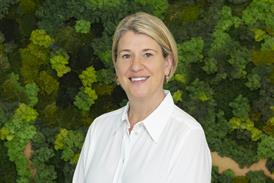
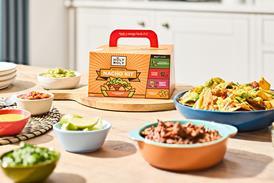



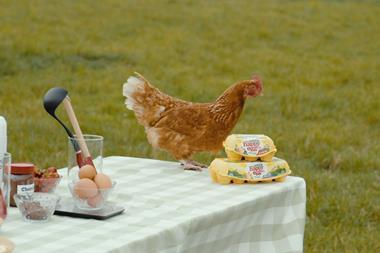
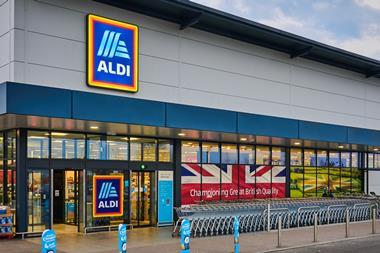

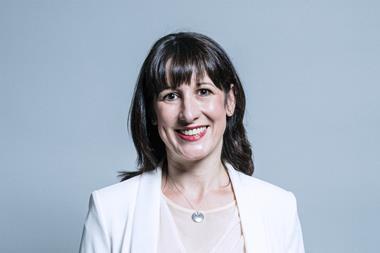
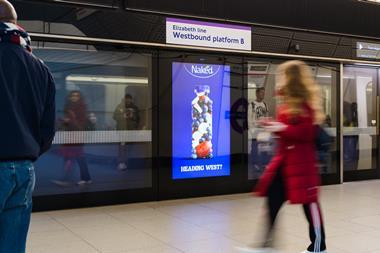
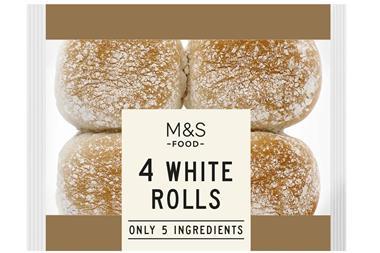


No comments yet